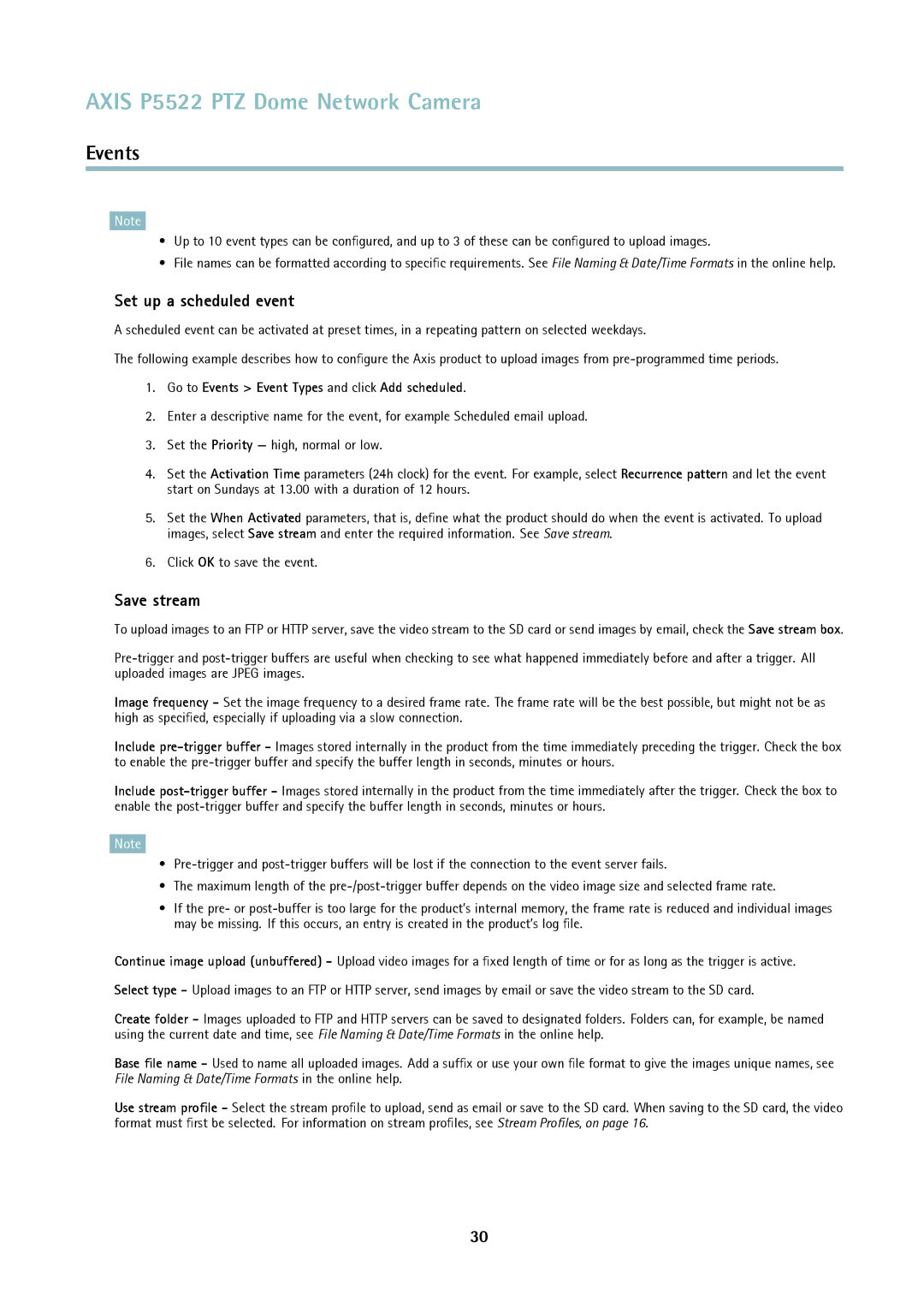
AXIS P5522 PTZ Dome Network Camera
Events
Note
•Up to 10 event types can be configured, and up to 3 of these can be configured to upload images.
•File names can be formatted according to specific requirements. See File Naming & Date/Time Formats in the online help.
Set up a scheduled event
A scheduled event can be activated at preset times, in a repeating pattern on selected weekdays.
The following example describes how to configure the Axis product to upload images from
1.Go to Events > Event Types and click Add scheduled.
2.Enter a descriptive name for the event, for example Scheduled email upload.
3.Set the Priority — high, normal or low.
4.Set the Activation Time parameters (24h clock) for the event. For example, select Recurrence pattern and let the event start on Sundays at 13.00 with a duration of 12 hours.
5.Set the When Activated parameters, that is, define what the product should do when the event is activated. To upload images, select Save stream and enter the required information. See Save stream.
6.Click OK to save the event.
Save stream
To upload images to an FTP or HTTP server, save the video stream to the SD card or send images by email, check the Save stream box.
Image frequency - Set the image frequency to a desired frame rate. The frame rate will be the best possible, but might not be as high as specified, especially if uploading via a slow connection.
Include
Include
Note
•
•The maximum length of the
•If the pre- or
Continue image upload (unbuffered) - Upload video images for a fixed length of time or for as long as the trigger is active.
Select type - Upload images to an FTP or HTTP server, send images by email or save the video stream to the SD card.
Create folder - Images uploaded to FTP and HTTP servers can be saved to designated folders. Folders can, for example, be named using the current date and time, see File Naming & Date/Time Formats in the online help.
Base file name - Used to name all uploaded images. Add a suffix or use your own file format to give the images unique names, see File Naming & Date/Time Formats in the online help.
Use stream profile - Select the stream profile to upload, send as email or save to the SD card. When saving to the SD card, the video format must first be selected. For information on stream profiles, see Stream Profiles, on page 16.
30
